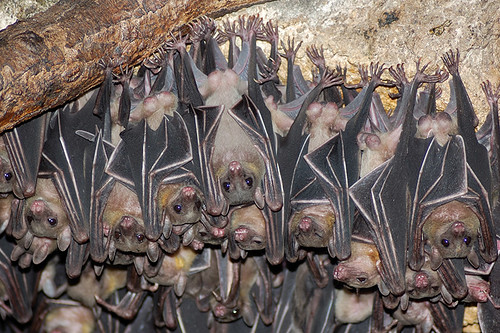 |
| CDV in macaques |
- A molecular mechanism for the apparently clinically recognised vitamin A-induced inhibition of measles virus is uncovered in vitro. Both Vitamin A and viral infection of cells is required to mediate the inhibitory response (here). Further stresses the importance of preventing vitamin A deficiencies across the developing world. See a major Cochrane review of all measles/vitamin A literature detailing only a significant effect of vitamin A 'megadoses' on measles treatment.
- A large (>10,000 animals) canine distemper virus (CDV) outbreak in a Rhesus macaque breeding centre in China caused by a unique strain of the virus - reasons how this occurred are unknown but has been going on since 2006. Interestingly, the infection resembled a human measles infection. Paper here.
- A study investigating the interactions between Herpes simplex virus-1 (HSV-1) - the causative agent of cold-sores - and the nasal mucosal surface was performed using cultured nasal epthithelium taken directly from human patients (read here). The group bbserved viral infection of epithelial cells followed by penetration through the basement membrane and replication in the underlying tissue, shedding light on the mechanisms this virus and other related pathogens use to infect humans and other animals.
 |
| Herpes simplex virus -1 spread in human nasal mucosal tissue |
- A host species for the Reston strain of Ebola virus that infected and killed a number of laboratory monkeys in Reston near Washington, DC and pigs in Asia has been putatively identified as Geoffroy's Rousette - a fruit bat found across South-East Asia and specifically the Philippines. Provides further evidence of an association of bats and the different Ebola virus species. Read the paper here.
 |
| Geoffroy's Rousette fruit bat found across South-East Asia - host of Reston ebola virus? |
No comments:
Post a Comment
Markup Key:
- <b>bold</b> = bold
- <i>italic</i> = italic
- <a href="http://www.fieldofscience.com/">FoS</a> = FoS